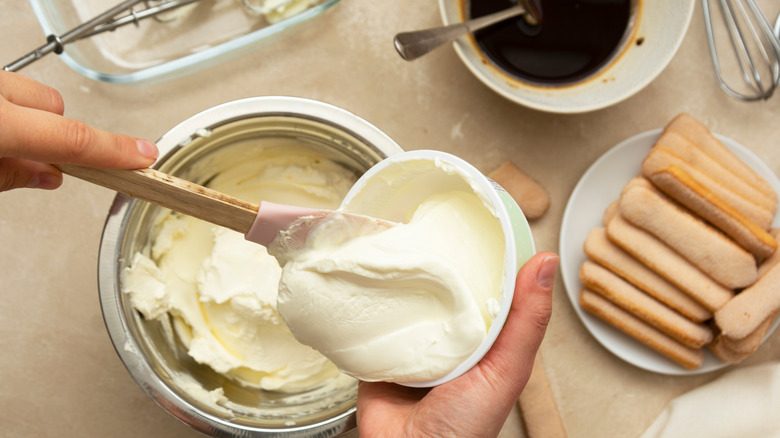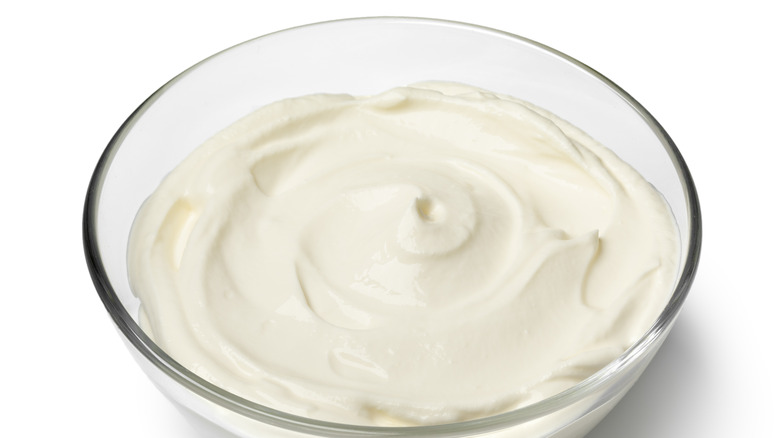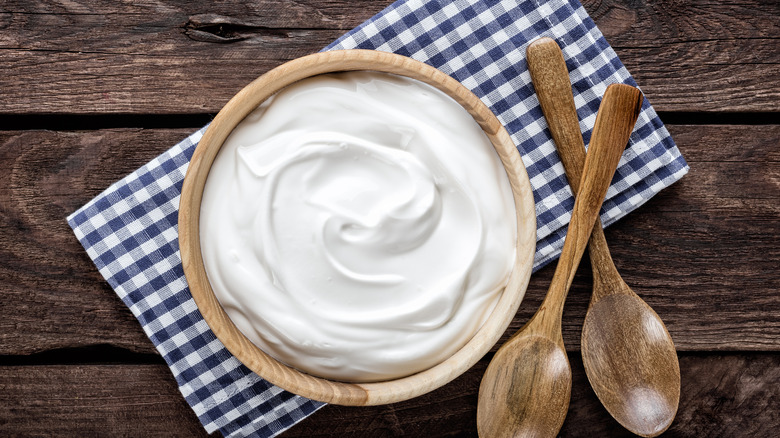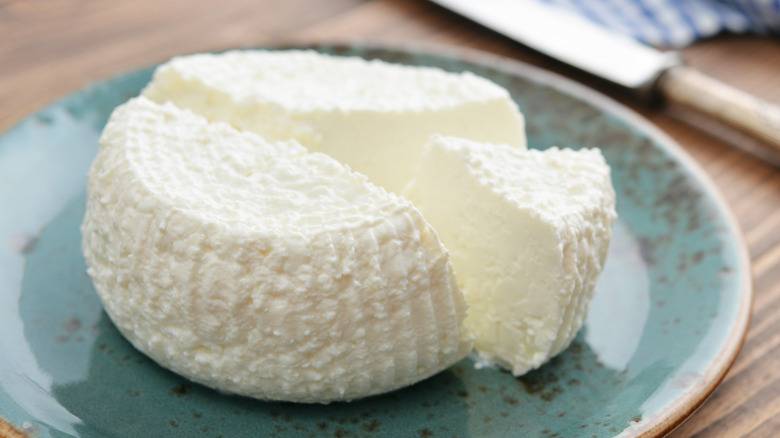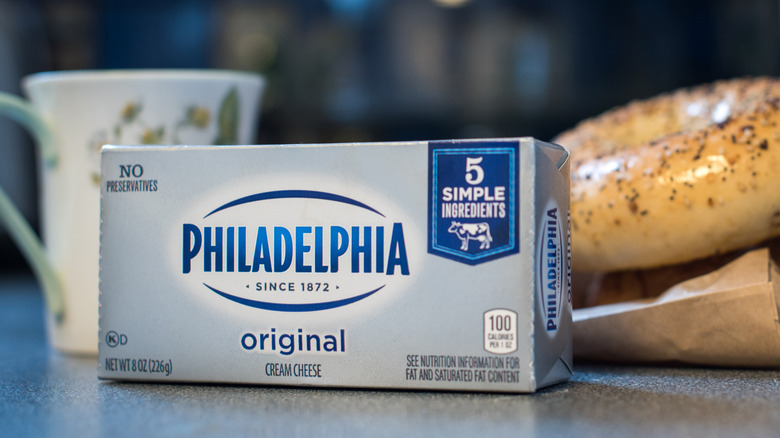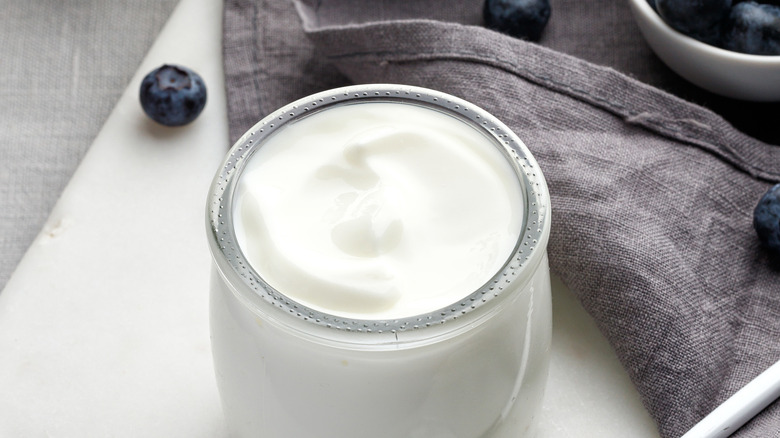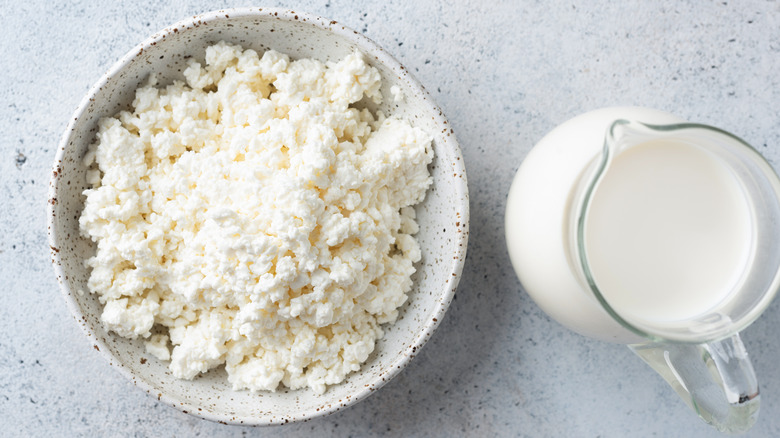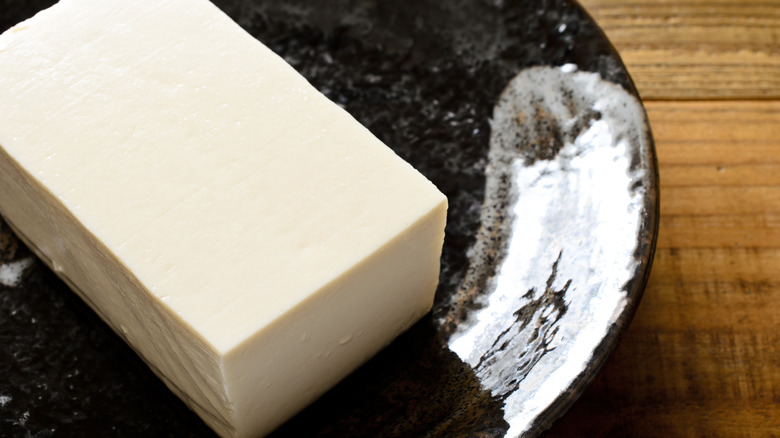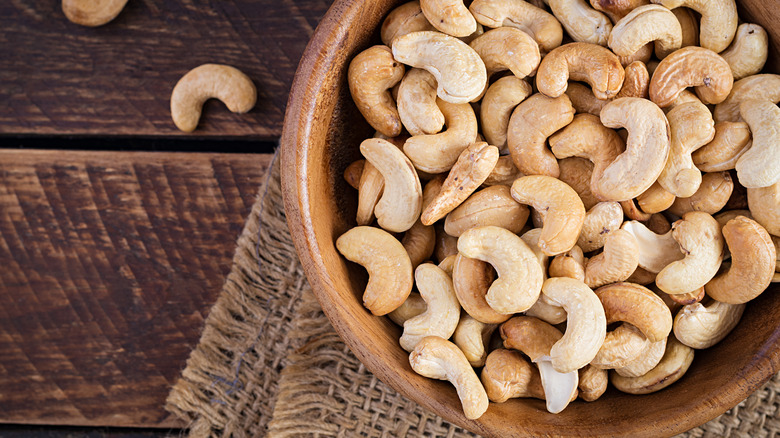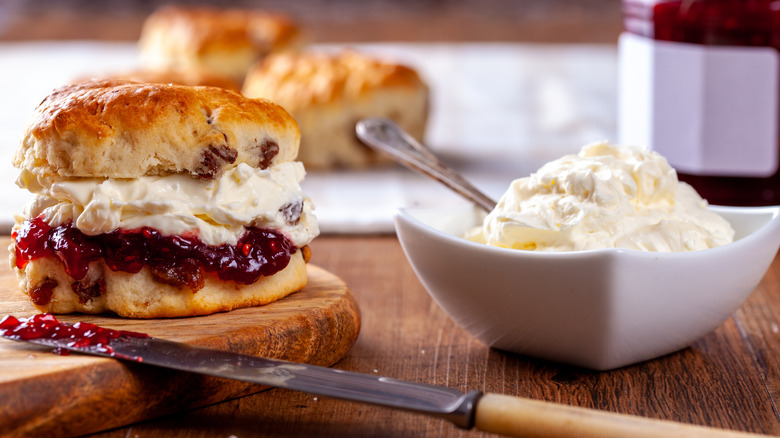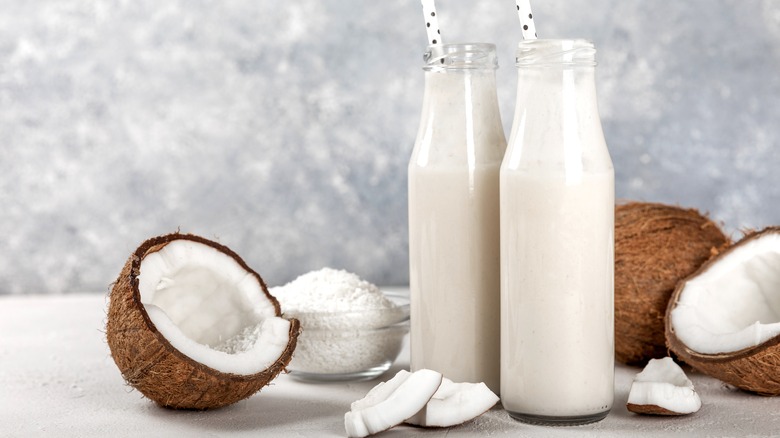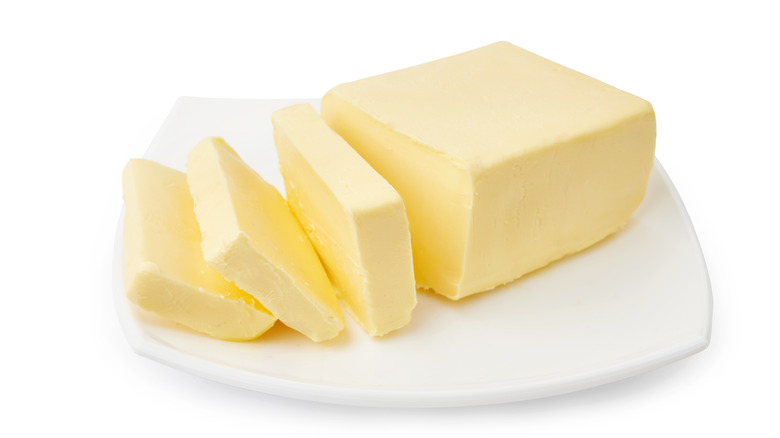11 Best Substitutes For Mascarpone
Mascarpone is a soft, creamy cheese made from the milk of pasture-grazing cows in the Lombardy region of Northern Italy (via Britannica). To make mascarpone cheese, the cream is heated, mixed with an acid, and then pressed through cheesecloth, resulting in thickened, tangy solids. There are many ways to use mascarpone, but its claim to fame is with beloved Italian desserts such as tiramisu and cannolis. That being said, it is an extremely versatile ingredient in both savory and sweet applications. For example, mashed potatoes, risotto, and pasta can all be enriched with the addition of mascarpone. Its rich fat content and creamy finish make it the perfect ingredient to elevate any dish.
Although most grocery stores carry this ingredient, especially from BelGiosioso, you may run into scenarios where it's unavailable, or you're in the middle of cooking at home and realize you recently ran out of this all-star dairy product. Alternatively, you might be vegan or plant-based and are looking for a dairy-free alternative to use. Thankfully, a handful of other great products can be swapped in for mascarpone at a moment's notice.
Crème fraîche
Crème fraîche is a cream-based cheese produced in France and is considered mascarpone's French cousin. That's to say, they're very similar in both taste and texture and can easily be substituted for one another. While it's true that the French and Italians have been known to feud with one another over who has superior ingredients, particularly when it comes to wine, it's safe to say that both of these products are high-quality, luxurious, and absolutely delicious.
If you don't have mascarpone on hand, one great use for crème fraîche is as a thickener for soups and pan sauces due to its decadent texture and mildly nutty flavor. They are easily interchangeable with one another and are the two most similar products on this list. Thanks to its generous fat content, crème fraîche can withstand high heat and be added to a dish during the cooking process without curdling or separating. This makes it ideal for swirling your favorite ingredients in a pot or pan towards the end of the cooking process, adding a silky, glazed effect.
Sour cream
Another great substitution for mascarpone is sour cream, which is different from crème fraîche but shares a lot of similar traits. All three are thick and tangy, with sour cream coming in with the highest acidity. True to its name, it has a slightly tart flavor and lends great body and richness to a dish. Although many people associate sour cream with Mexican dishes, it has far more uses and can span across many different cuisines. Sour cream has lower fat content than mascarpone and cannot withstand as high of temperatures, making it more prone to curdling.
The best way to keep this from happening is to incorporate sour cream into a dish off the heat, mix it into room temperature sauces, or fold it into cake batter, which yields a very moist and tender crumb. Luckily, sour cream can be found in practically every grocery store, so it's very easy to swap in if you have a hard time locating the sometimes elusive mascarpone. When purchasing sour cream, try to avoid fat-free or reduced-fat variations, as this will compromise the integrity of the substitution and will result in a different flavor.
Ricotta
Lighter and fluffier in texture, ricotta is most similar to cottage cheese but shares many appetizing properties with mascarpone. They are both Italian ingredients; however, mascarpone hails from the north, whereas ricotta is produced in the southern region of Calabria or Sicily. Most people don't know that ricotta is not technically considered cheese but is actually a cheese by-product because of the way it's produced. Both dairy products are made by heating milk to a certain temperature, but mascarpone is made from curd, and ricotta is whey-derived. If you're not familiar with whey, it's the liquid leftover from straining other types of cheese, like mascarpone, which is then recooked with additional lemon juice and strained once more to create ricotta.
This process makes a lot of sense when you consider the roots of the word ricotta, which roughly translates to "recooked" in Italian. Ricotta has a mild creaminess compared to mascarpone and has a neutral base that can take on many additional flavors, such as lemon zest or garlic. It's great as a white pizza sauce base, baked into your favorite cheesecake, or spread on a slice of freshly toasted sourdough and drizzled with high-quality olive oil and flaky salt.
Ricotta and mascarpone have slightly different textures, which can make a difference depending on your recipe. To best substitute with ricotta, purchase a brand with a very fine texture. Additionally, consider whipping your ricotta before using it in place of mascarpone.
Cream cheese
Not just for shmearing on bagels, cream cheese is super versatile in both cooking and baking and is a great substitution for mascarpone. In the proper state, it's creamy and tangy and can bring richness and fat to several different types of dishes. When choosing a cream cheese, select the full-fat option and avoid any whipped varieties, as they will yield a different texture. In addition, it's best to avoid any flavors unless you think they will complement the other ingredients in the dish. Chive-flavored cream cheese may taste great mashed into potatoes or mixed into scrambled eggs but could throw off the delicate balance of a pan sauce. On the other hand, strawberry cream cheese contains a lot of added sugar and may add too much sweetness to a dessert.
It's important to soften cream cheese before using it in order to utilize this ingredient in its creamiest state. If you try to swap in cream cheese straight from the fridge while it's formed into a cold brick, you will not achieve the desired texture to emulate mascarpone. If you forget to take it out of the fridge ahead of time and need it in a pinch, the best way to soften cream cheese is by letting it sit in a warm water bath for about fifteen to twenty minutes. After that, you can remove it from the packaging, and it's ready to use!
Greek yogurt
Many people assume yogurt is reserved for parfaits and other breakfast items and, in doing so, severely underestimate its potential in the kitchen. This power ingredient has many different uses and is a great stand-in for mascarpone as it's usually on hand in the refrigerator.
Its zesty flavor profile makes for an easy swap and adds a much-needed touch of creaminess and acidity to any dish. Many types of yogurt are available to purchase, which can make the shopping process very confusing, especially if you're unfamiliar with the different varieties. That said, it's recommended to use Greek yogurt versus regular yogurt as it's higher in protein and fat, thus similar to mascarpone. Greek yogurt is also thicker, making it more similar in texture to mascarpone than other substitutes. It can be a great alternative for those looking to incorporate a rich and creamy ingredient into a dish without the empty fat content.
Thanks to its versatility, it can be used as a swap for cooking and baking but is especially great when it's whipped and dolloped over grilled stone fruits. Similar to sour cream, it can easily curdle, so it's recommended to incorporate this ingredient off the heat.
Cottage cheese
If you're looking to lighten up a dish that calls for mascarpone, this dairy option is popular, as cottage cheese also supports a nutrient-rich diet. Over the past few years, cottage cheese has experienced quite the glow-up thanks to brands like Good Culture re-introducing this formerly dated ingredient to a new generation of consumers. With its low-calorie and high protein content, it's a great option for those looking to enjoy the creaminess of mascarpone without incorporating the additional fat. As a bonus, cottage cheese contains even more protein than Greek yogurt and several important nutrients that will keep you fuller for longer, per Healthline.
That being said, some people tend to shy away from this ingredient because of its unique texture. Since cottage cheese tends to be firmer and chunkier than mascarpone, they don't necessarily have the same mouthfeel. To combat this, it's best to blend cottage cheese with a small amount of liquid, typically water, which will result in a much creamier product. Unlike mascarpone, cottage cheese has a very mild taste, so you can experiment with adding different seasonings such as salt, garlic, nutritional yeast, parmesan cheese, and more to enhance the overall flavor of your dish.
Silken tofu
For those who are plant-based, vegan, or just looking to reduce their dairy intake, silken tofu is a great substitution for recipes that call for mascarpone. With its neutral flavor, tofu can take on many different forms and soaks up whatever tastes are present in a dish. Be sure to purchase silken versus firm tofu as it has a softer consistency; otherwise, you will end up with a firm product that doesn't melt properly into the dish. Silken tofu is prepared without curdling and thus can handle high-temperature cooking applications. One important thing to note is that there's no reason to press silken tofu after draining out the excess liquid, as it will lose shape and fall apart.
There are different types of tofu within the silken variety — firm silken or soft silken. The soft silken is the most similar to mascarpone, thanks to its delicate texture. Akin to cottage cheese, it's a low-calorie protein, according to Insider, and as a type of tofu, it contains several important vitamins and minerals, per Healthline. Firm silken will also work in a pinch but has a firmer consistency, as the name suggests. One of the best ways to use silken tofu is by blending it into a pasta sauce to emulate mascarpone's buttery finish, especially for vegan recipes. It's also great in sauce, dressings, and desserts like puddings and custards.
Cashew cream
Cashew cream is another excellent vegan substitution for mascarpone cheese. However, you won't be able to find this product in most grocery stores unless you have access to a niche wellness market. It's best to make cashew cream from scratch, but before you get scared off, the process is extremely hands-off and easy! It can be made with two simple ingredients, cashews, and water, combined in a glass or plastic container and left to soak overnight. The water helps break down the nuts' firmness so that they can blend easier into a creamy consistency. The flavor of the cashew also mimics the naturally nutty essence of mascarpone. After soaking for about 12 hours, you add the cashews, the reserved water, and salt to a blender until the mixture is smooth and you achieve the desired texture.
Like cottage cheese, you can amplify cashew cream's "cheesy" flavor with roasted garlic, nutritional yeast, and even capers for additional saltiness. You can also roast or toast the cashews before soaking them in water to create a deeper layer of flavor. Once blended, it will last in the refrigerator for about 5 to 7 days, or you can freeze the sauce in an airtight container for up to 6 months. Amongst other uses, cashew cream is another great ingredient to help create the perfect vegan pasta sauce thanks to its high-fat content and palatable mouth-feel.
Clotted cream
Hailing from across the pond in the United Kingdom, relatively close to its Italian neighbor, clotted cream is another decadent dairy product that can easily replace mascarpone in specific applications. Namely used for dolloping on top of scones, English clotted cream is a beloved kitchen staple thanks to its thick and velvety texture. Producing clotted cream starts by gently heating full-fat milk until the cream begins to separate (via Fine Dining Lovers). The cream is then skimmed twice to leave all milk residue behind. The residual cream is left to sit, or "clot," for several hours before baking on low heat to firm up the butter fats. The resulting texture is similar to that of ice cream or softened cream cheese, and the flavor is equally buttery with a slight sweetness.
Because it's so rich, it's not meant to be used in cooking but can be substituted for mascarpone in certain desserts or dolloped on top of a dish as the perfect finishing touch. It is also a great substitute for whipped mascarpone, especially when served with berries. Clotted cream has a short shelf life of about 3 to 4 days once the seal of the jar has been broken, so it's best to either eat it all at once or freeze any extra product for later use. The most important thing to consider between mascarpone and clotted cream is the taste. While the former has a sweetness ending in tang, clotted cream has a nutty, milky finish.
Coconut cream
For some, exposure to coconuts dreams up the notion of vacationing on a Caribbean island and drinking a pina colada (with an extra rum floater). However, coconut-based products are gaining popularity as dairy-free substitutes for milk and other ingredients, alongside ultra-popular almonds and oats. Coconut cream is another great vegan substitute for mascarpone, but it's important to understand the difference between coconut milk and cream, as they will result in very separate outcomes should you swap for mascarpone. Coconut cream is lower in water and fat than its milk counterpart, giving it a smooth, thick consistency that more easily resembles the functions of mascarpone.
You can typically find coconut cream in cans at the grocery store but be sure not to confuse it with cream of coconut, another canned product that is very sweet and loaded with added sugar, typically reserved for tropical cocktails. If you happen to come across an actual coconut, you can make coconut cream by removing the meat lining the interior of the coconut and blending until creamy. Due to its subtle sweetness and coconut flavor, coconut cream is a great replacement for mascarpone in classic desserts like tiramisu, with most bakers recommending a 1:1 swap. It may not be the best replacement for savory recipes, as the coconut flavor can overpower the dish.
Butter
Last but certainly not least, butter is the ultimate dairy substitute in cooking. When in doubt, you can always lean on this kitchen staple to enhance both the flavor and texture of a savory dish. It's great for finishing pasta, mashing it into potatoes, stirring in risotto, and much more. Many restaurants and chefs will add a knob of chilled butter to a pot or pan of food at the end of the cooking process in order to create an ultra-glossy appearance.
Whatever brand you end up using, be mindful of whether it's salted or unsalted so that you can adjust your seasoning appropriately. If you're using salted butter, you will want to add less salt in general so that it doesn't end up overpowering the final dish. Overall, butter will work as a mascarpone substitute in cooking functions but fails to match the ingredient in other uses.
For example, butter is not always a suitable replacement for mascarpone when it comes to baking and desserts. Whereas cooking is an art, baking is more of a science, and butter should not be used as a one-to-one swap for other dairy-based ingredients like mascarpone unless a recipe specifically mentions it. Its composition is quite different from mascarpone and has a very different flavor profile which can compromise the integrity of a creamy confection.
